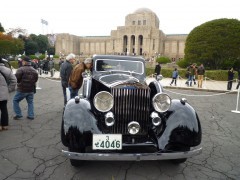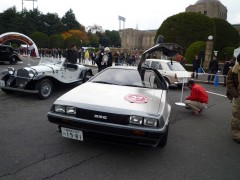31 December 2012
Americans as oppressors to Japanese
18:03 Posted in Japan News, Politics, US-Japan relationship, USA issues | Permalink | Comments (0) | Tags: military, nuclear aircraft carrier, okinawa
25 December 2012
Translated Novel: "Let's Fundoshi" Last Chapter
A Candadin man experiences FUNDOSHI, Japanese traditional male underwear, swimming suit and custume for festival.
Read Chapter 1 first.
All the men walked to the beach and they got on the sand.
After while, they got near water’s edge. Transporting hundreds of kilograms of mikoshi, they were moving into the sea. They had to walk for 300 meters to the end of shallow.
Jacques walked on the same course for the preview a few days ago. Deepest point was as high as his chest. For others, it would be as high as their shoulder. In water, their feet could easily lose balance but they had to proceed little by little. When they reached the rock, they had to turn around to get back to the ground.
Around them was sounds of flutes and drums. All together shouted “Wassshoi, wasshoi!” The water level got so high as water got into their tabi socks shoes. Then got near the crutch. They got in depth of fundoshi. That was 100 meters away from the beach. The spectators were seen far away in small size. That made them feel like left alone in the sea.
“Here! We got into deeper” said Taizo.
As they proceeded, it got deeper and deeper and water level was getting higher. They could see the rock tens of meters away. The important thing was not let the mikoshi sink in the water. They all got united.
“Wasshoi, wasshoi!” shouted simultaneously, so loud that spectators on the ground could hear them. The water level got to Jacques’s chest. Deepest point! A few meters away was the rock.
“Now let’s go back!” shouted Taizo. Taizo got his neck in water. Looked like he could not reach his feet on the bottom swimming. He led the group to the return course.
Go back, Go back to the shrine.
“Let’s go” Jacques shouted.
The group was returning to the ground. He saw Yuriko and Annes waving their hands far away. Annes smiled at them together with Yuriko. Jacques was delighted to see that.
As they reached the beach, they found themselves wet from their feet to the shoulder. They got on the road and continue transporting the mikoshi shouting “Wasshoi, Wasshoi!” Wet bodies, wet fundoshi. They were all wet men.
Before they reach the shrine, they had to do something, which is called “Shonuki (Removing salt)” All the men were showered with pure water by a hose. They were already wet but with salt and muds they were not allowed to enter the shrine.
When the water touched the ground, a rainbow appeared. It was like a God’s rainbow. Impressive view. It made them feel great to get showered with water in sunlight.
Yuriko was staring at Jacques being showered with shining eyes. Her eyes seemed like seducing him. Jacques got away from the mikoshi and came close to her. Then she came close to him.
Jacques instantly took her hand to himself and then lifted her in his arms. Then the two kissed each other on his arms passionately. He, just couldn’t help doing it.
Oh, this was not to be done here. Here isn’t Canada.
But the crowds around them were impressed and gave cheers. The mikoshi carriers said “You, two look nice.”
After that the mikoshi got back to the shrine. They placed it on the table and the guys went away from the mikoshi. They had to go to the bath house to put off fundoshi and wash their bodies. There were some other events they had to join later.
Jacques went to see Yuriko and Annes before going to the bath house.
“Did you enjoy that?” Jacques said to Annes.
“Yes, I felt a little better. It is meaningless to regret what happened” said Annes.
“Jacques-san, let’s go to the bath house” said Taro behind him.
“Ok” said Jacques. Taro looked at Yuriko but he looked so fresh and showed no ill feeling. Yuriko felt relieved.
Looking at Jacques and Taro heading to the bath house, Annes said.
“Who is that boy? He has very sexy ass. I want to get acquinted.”
Annes’s eyes focused on Taro’s ass.
A year later, Jacques was on a fishing boat with Taizo. Jacques got training from Taizo as fishermen. Taizo recovered his health and got back to his job. Jacques got interest in fishing since that festival. He decided to be the one like Taizo. Now he’s got training from Taizo. He decided to live in Japan from now on.
After fishing waits a pregnant wife, Yuriko. Yuriko will soon give birth to a baby.
By the way, Taro was in Canada now. With Annes. Annes was so attracted to his ass that she stalked and got him. Then the two decided to wed and have a new life there. Fundoshi changed her like a magic.
When they got near home, neighbor woman seemed hectic.
“Taizo-san, Jacques-san, a big trouble. Yuriko got into labor and now transported to the hospital.”
Expected labor period was a month ahead. Jacques and Taizo hurried to the hospital.
And a child was born. It was a healthy boy. Accidently it was a day of summer festival. Thanks to that, Taizo and Jacques could not participate in the mikoshi carrying.
The boy was born on that day, he should really love festival like Taizo and Jacques. They all thought, when he grows up, let him join the mikoshi carrying wearing fundoshi.
The END
18:19 Posted in My novel | Permalink | Comments (0)
11 December 2012
Sociological Novel: How to maintain a plutonomy, Chapter 1
A plutonomy means a form of capitalism that is designed to make the rich control a nation's government, its economy and its society.
At a certain place in a certain country, the wealthy have gathered and are having a meeting.

They are the elite of the country. Although few in number, they control the majority of the country's wealth. This is why they can do anything. They have the power to manipulate society to suit themselves. They have the economy, of course, politics, and even the media which forms public opinions in the palms of their hands.
As they all gather under the chandelier, one of the wealthy breaks the ice while drinking his champagne.
"Hey, the global economy is on a bit of a downturn recently. I feel that our wealth has also been on a decreasing trend. Shouldn't we come up with some kind of countermeasure to this?"
"You're so right. Taxes are still just too high! We should really bring down things like the income tax rate."
"-and let's privatize the public enterprises. And relax the regulations. Let's pressure the government to get rid of regulations which are an obstacle to business. And to reduce labor costs, make them allow more temporary workers. The politicians and government officials all got where they are now through our donations and pay-offs; they'll do whatever we ask."
"But the government's budget will shrink by the amount the taxes we pay goes down, won't it? How do we make up for the deficit?"
"That's easy. We just reduce the education and social welfare budgets which have been used for the public up to now. The expensive taxes that we've been paying have been diverted to those that barely pay any tax. That's why we just need to keep raising consumption tax, insurance and pension payments, which they have to pay an equal amount of."
"But surely the public won't allow it. If we do that, public services will be degraded, the burden on individuals will increase, and they'll be critical that the rich get preferential tax treatment, and that workers are treated as disposable. We have to be conscious of the fact that this country is a democracy. Even if we have all of the wealth, regardless of one's assets, when it comes to votes it's one person, one vote after all."
"Which is why we'll use the media. We are also their major stockholders and advertisers; we’ll feed them this information. We'll tell them that freeing the economy will lead to the development of the public and government as a whole, that they should consider the principles of capitalism, and that a large variety of cheaper, high quality goods and services will become available to consumers thanks to this freeing up. We'll tell them that if enterprise profits, workers will also receive benefits through the trickle-down phenomenon. If we run a campaign like this using some kept scholars, nobody will oppose us!"
The proposals decided upon at the meeting were executed by the government, and went unopposed by society thanks to the media's guidance of public opinion. Now then, on to the second meeting ten years later.
To be continued to Chapter 2
The story is an interesting and cynical perspective of the past few generations of society, specifically focusing on the disparity in wealth between the wealthy and the average member of the public. The story shows the wealthy conspiring to widen the gap between themselves and the workers of society.
It may be interesting to read this story along with a song. "Mercedes Benz".
03 December 2012
"Classic Car Festa" in Jingu Gaien, Tokyo
It might sound Japanese English. It means Retroprospective automobile exhibition. Tens of the old generation cars lined up in one place, called Jingu Gaien on 1 of December 2012.
It was a great show. I could see a lot of kinds of cars in the old days.
Most notable ones I want to introduce, which I've taken photos of are as follows.
Rolls-Royce
Buick, the length of the body is 5 metre.
De Lorean, Car featured in the film "Back to the Future"
Countach, A car that a driver needs to get his head out of his car when driving back
Mercedes-Benz in 1970's, this was the model when the same titled song was popular.
"Oh, Lord. Won't you buy me a Mercedes Benz?" Are you rich enough to afford those cars?
23:34 Posted in Japan News, Leisure, Tokyo Life | Permalink | Comments (0) | Tags: cars, history











